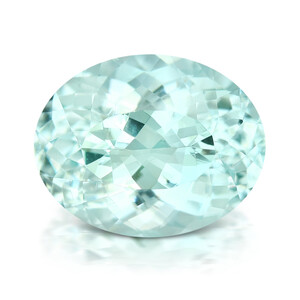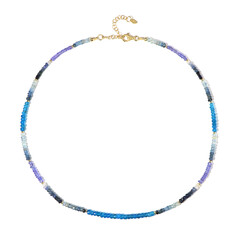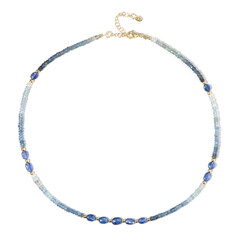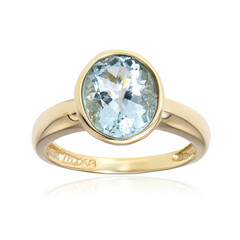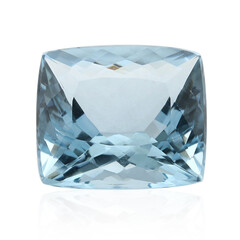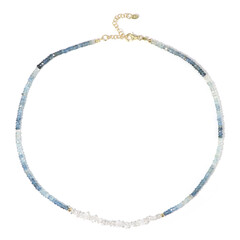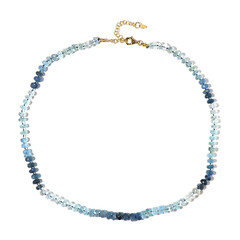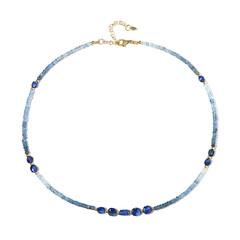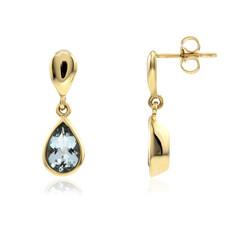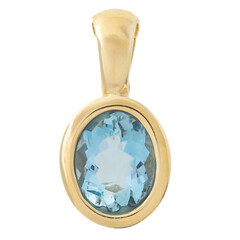Aquamarine
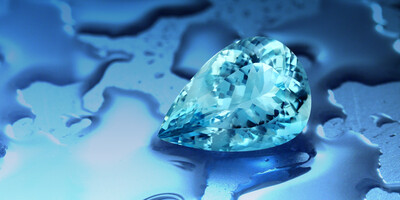
1. Introduction
Aquamarine is one of those gemstones that most people find instantly attractive. Blue may be one of the most popular colours in the world, but it is the clear purity of blue aquamarine and its resemblance to the sea that brings a sense of calm and serenity for many.
2. Name, Origin and History
Name
The connection to the sea is already clear from the name: "aquamarine" literally means "water of the sea" and is made up of the Latin words "aqua" (water) and "marinus" (belonging to the sea).
Origin
Aquamarines in their raw form can be found in pegmatite veins, in metamorphic rocks and as mineral soaps in river sediments. Before the discovery of African deposits, the highest quality aquamarines were mined around 1830, mainly in the Brazilian gemstone fields of Minas Gerais and in the Urals. In the meantime, however, countries such as Nigeria, Madagascar, Mozambique and Zambia have also established themselves as gemstone mining regions.
History
The gentle aura of aquamarine is legendary: according to ancient tradition, the gemstone is said to be able to appease the god of the sea, Poseidon (Roman: "Neptune"). Sailors once threw aquamarine amulets overboard during storms to please the god of the sea and prevent him from conjuring up earthquakes and storms. Aquamarine - the birthstone of the month of March - is also said to have a positive influence on prudence and wisdom.
3. Characteristics and Colour
Characteristics
Aquamarine is part of the beryl family (ancient Greek "beryllos" for blue-green stone), which is often referred to as the "mother of gemstones" as it includes many other varieties. In addition to the blue aquamarine, it also includes the following gemstones: the red bixbite, the green emerald, the white goshenite, the yellow heliodor and the pink morganite. Aquamarine is usually transparent and eye-clean, i.e. no inclusions are visible to the naked eye at a distance of approx. 15 cm. Even under magnification, aquamarines have a very high purity.
Colour
Aquamarine gets its colour from traces of iron, which in varying concentrations create an exceptionally beautiful colour palette ranging from delicate pastel shades to an intense dark blue, sometimes with a slight greenish shimmer. Aquamarines are judged by their blue colour, and the full beauty of this beryl only becomes apparent in the shimmer of candlelight.
4. Varieties
The different aquamarine varieties are classified according to their origin.
-

-

-

-

-

-

-

-

-

Tatu Aquamarine
This aquamarine also comes from Brazil, one of the countries that has the most minerals to offer. [ read more ]
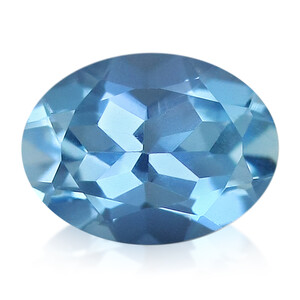
Bauchi Aquamarine
This delicate aquamarine is a soft ice blue with a very elegant colour tone [ read more ]
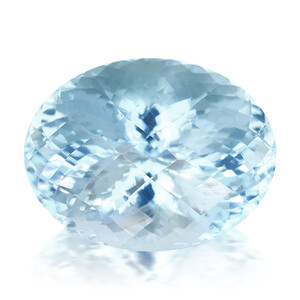
Pedra Azul Aquamarine
The Pedra Azul aquamarine has an overwhelmingly intense, dark blue colour and also comes from Brazil. [ read more ]
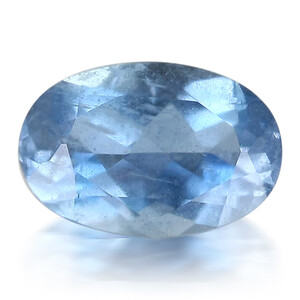
Cat's Eye Aquamarine
The reflection of long, needle-shaped, parallel inclusions creates a cat's eye effect. [ read more ]
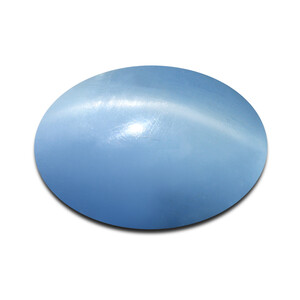
Santa Maria Aquamarine
The Santa Maria aquamarine is a rare aquamarine in an intense deep blue colour from the Brazilian Santa Maria de Itabira deposit. [ read more ]
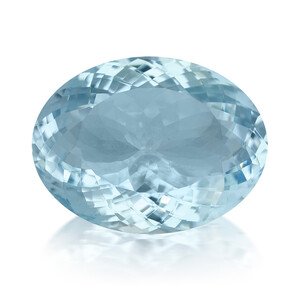

Tatu Aquamarine
This aquamarine also comes from Brazil, one of the countries that has the most minerals to offer. Shortly after its discovery, it quickly became one of the stars among jewellers around the world. Its colour is reminiscent of some of the wild seas of South America. A mystical and fascinating gemstone.

Bauchi Aquamarine
This delicate aquamarine is a soft ice blue with a very elegant colour. In addition to Brazil, African countries have also increasingly made a name for themselves as mining countries for beautiful aquamarines in recent years. The Bauchi aquamarine is named after its location in the state of Bauchi in Nigeria in West Africa.
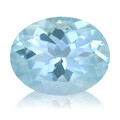
Sao Domingos Aquamarine
Brazilian stones also include the São Domingos aquamarine, which was discovered by chance on the cattle farm that gave the stone its name and comes in a classic aquamarine pastel blue colour.

Boca Rica Aquamarine
The Boca Rica aquamarine is also named after its Brazilian mine, which produces aquamarines with exotic sea-foam and ocean-like green tones.

Pedra Azul Aquamarine
The Pedra Azul aquamarine has an overwhelmingly intense, dark blue colour and also comes from Brazil.
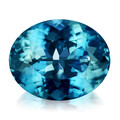
AAA Aquamarine
The AAA rating is proof of the perfection of this gemstone. AAA aquamarines are of higher quality than other gemstones from the same area of origin. They have a more intense colour and fewer inclusions, although aquamarines rarely show inclusions to the naked eye.

Cat's Eye Aquamarine
The aquamarine cat's eye is extremely impressive: this effect is virtually unheard of in aquamarines. It is caused by the reflection of long, needle-shaped, parallel inclusions. Aquamarine cat's eye was and is found in Brazil, Madagascar, Mozambique, Zambia, Nigeria and Tanzania.
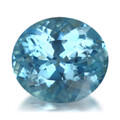
Santa Teresa Aquamarine
The Santa Teresa aquamarine also comes from Brazil. It enchants with its brilliant turquoise-blue colour. This special material has a first-class crystallisation that makes even the Santa Maria look pale in terms of lustre. In terms of colour, the two stones are the same, although the depth of colour of Santa Maria is greater, but the crystallisation of Santa Teresa is unsurpassed. It is one of the most brilliant aquamarines imaginable, with a strong blue colour. You get fire, colour and sparkle. This material trades for about $300-500 per carat, which is about 20-30% less than Santa Maria.

Santa Maria Aquamarine
The Santa Maria aquamarine is a rare aquamarine in an intense deep blue colour from the Brazilian Santa Maria de Itabira deposit. Santa María de Itabira is located in Minas Gerais in the south-east of Brazil. In the beginning, gold was sought here - as in the entire region. However, hardly any gold was mined. At the beginning of the 20th century, aquamarine was found, the best quality ever seen. Aquamarine is so deeply connected to the identity of the people of the region that an aquamarine is depicted on the county flag. It is the symbol and pride of the inhabitants of Santa Maria de Itabira, where mining is a great tradition.
5. Treatment and Care
The aquamarine should only be subjected to gentle care or steam cleaning.
Aquamarine (Aquamarine (Cabochon))
Aquamarine (Ofiki Aquamarine)
Aquamarine (Lundazi Aquamarine, Moss Aquamarine)
Aquamarine (Medina Aquamarine, Nigerian Aquamarine)
Aquamarine (AAA Aquamarine, AAA Brasilian Aquamarine, AAA Santa Maria Afrikana Aquamarine, AAA Santa Maria Aquamarine, Aquamarine, Bauchi Aquamarine, Boca Rica Aquamarine, Cat's Eye Aquamarine, Pedra Azul Aquamarine, Santa Maria Afrikana Aquamarine, Santa Maria Aquamarine, Santa Teresa Aquamarine, Sao Domingos Aquamarine, Tatu Aquamarine)
6. Anniversary and Birthstone
As a birthstone, aquamarine is assigned to the month of March. In astrology, it is associated with the zodiac sign Scorpio. In Chinese astrology, it is assigned to the rooster.


